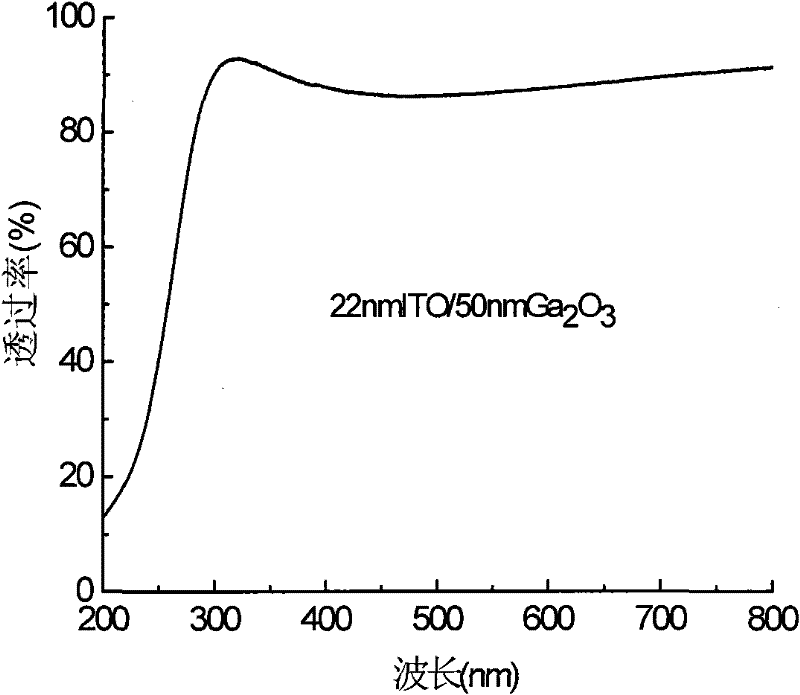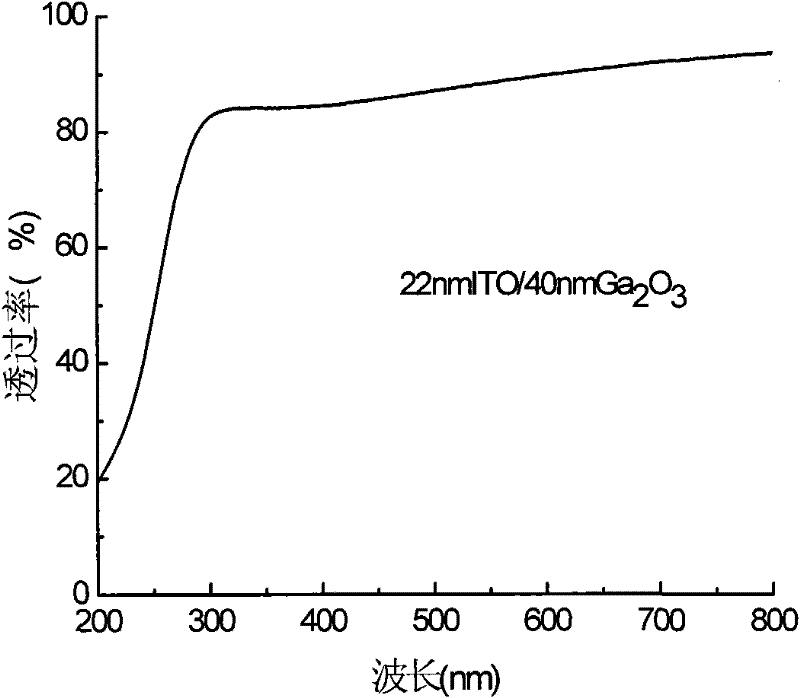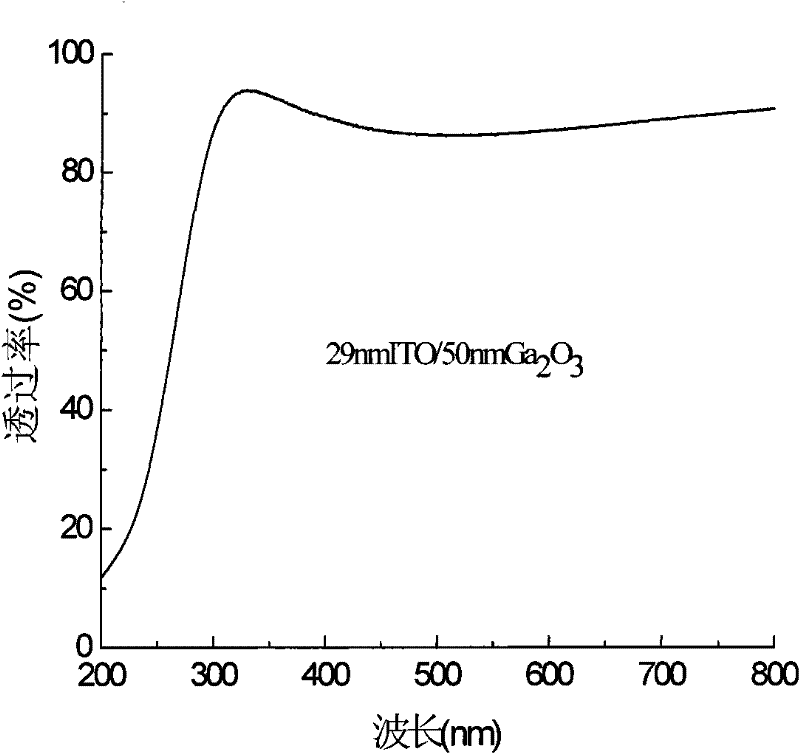Double-layer structure deep-ultraviolet transparent conductive film and preparation method thereof
A technology of transparent conductive film and double-layer structure, which is applied in semiconductor/solid-state device manufacturing, coating, circuit, etc., and can solve the problems of difficult large-area film formation, expensive equipment, and high sheet resistance
- Summary
- Abstract
- Description
- Claims
- Application Information
AI Technical Summary
Problems solved by technology
Method used
Image
Examples
Embodiment 1
[0019] Example 1: 22nmITO / 50nmGa 2 o 3
[0020] The substrate is made of JGS1 far-ultraviolet optical quartz glass. The substrate is ultrasonically cleaned with acetone, alcohol and deionized water, and dried with a nitrogen gun. The purity of 99.99wt% Ga 2 o 3 The ceramic target is installed in a radio frequency cathode target slot in the magnetron sputtering chamber, and the SnO 2 / (In 2 o 3 +SnO 2 ) ratio of 10wt% ITO target is installed in a DC cathode target slot in the magnetron sputtering chamber. Put the cleaned JGS1 far-ultraviolet optical quartz glass into the substrate holder, and insert the substrate holder into the substrate tray in the sputtering chamber. Use a mechanical pump and a molecular pump to evacuate the sputtering chamber so that the vacuum degree of the sputtering chamber is less than 6.0×10 -4 Pa. Set the temperature controller, adjust the heating current to heat the substrate, and stabilize the substrate temperature at 250°C. Adjust the fl...
Embodiment 2
[0021] Example 2: 22nmITO / 40nmGa 2 o 3
[0022] The preparation process is the same as in Example 1, except that the radio frequency sputtering deposits Ga 2 o 3 The layer thickness is 40 nm. Using the above process to finally form a double-layer structure 22nmITO / 40nmGa 2 o 3 Deep UV transparent conductive film. The prepared double-layer structure 22nmITO / 40nmGa 2 o 3 The transmittance curve of the deep ultraviolet transparent conductive film in the range of 200-800nm is as follows figure 2 shown. The optical transmittance (excluding substrate) at 280nm is 75.8%, the optical transmittance at 300nm (excluding substrate) is 82.6%, and the average transmittance (excluding substrate) in the 300-800nm spectral range is higher than 86%. The surface resistance of the film is 334Ω, and the film resistivity is 2.07×10 -3 Ω.cm.
Embodiment 3
[0023] Example 3: 29nmITO / 50nmGa 2 o 3
[0024] The preparation process is the same as in Example 1, except that the substrate is made of JGS2 ultraviolet optical quartz glass, the substrate temperature is 300°C, the argon pressure of the sputtering gas is 1.0Pa, the RF sputtering power is 60W, the DC sputtering current is 140mA, and the DC sputtering voltage is 360V , sputter-deposited ITO layer thickness 29nm. Using the above process to finally form a double-layer structure 29nmITO / 50nmGa 2 o 3 Deep UV transparent conductive film. The prepared 29nmITO / 50nm Ga 2 o 3 The transmittance curve of the double-layer structure deep ultraviolet transparent conductive film in the range of 200-800nm is as follows image 3 shown. The optical transmittance (excluding substrate) at 280nm is 70.9%, the optical transmittance at 300nm (excluding substrate) is 87.5%, and the average transmittance (excluding substrate) in the 300-800nm spectral range is higher than 88%. The surface...
PUM
| Property | Measurement | Unit |
|---|---|---|
| thickness | aaaaa | aaaaa |
| thickness | aaaaa | aaaaa |
| wavelength | aaaaa | aaaaa |
Abstract
Description
Claims
Application Information
 Login to View More
Login to View More - R&D
- Intellectual Property
- Life Sciences
- Materials
- Tech Scout
- Unparalleled Data Quality
- Higher Quality Content
- 60% Fewer Hallucinations
Browse by: Latest US Patents, China's latest patents, Technical Efficacy Thesaurus, Application Domain, Technology Topic, Popular Technical Reports.
© 2025 PatSnap. All rights reserved.Legal|Privacy policy|Modern Slavery Act Transparency Statement|Sitemap|About US| Contact US: help@patsnap.com



